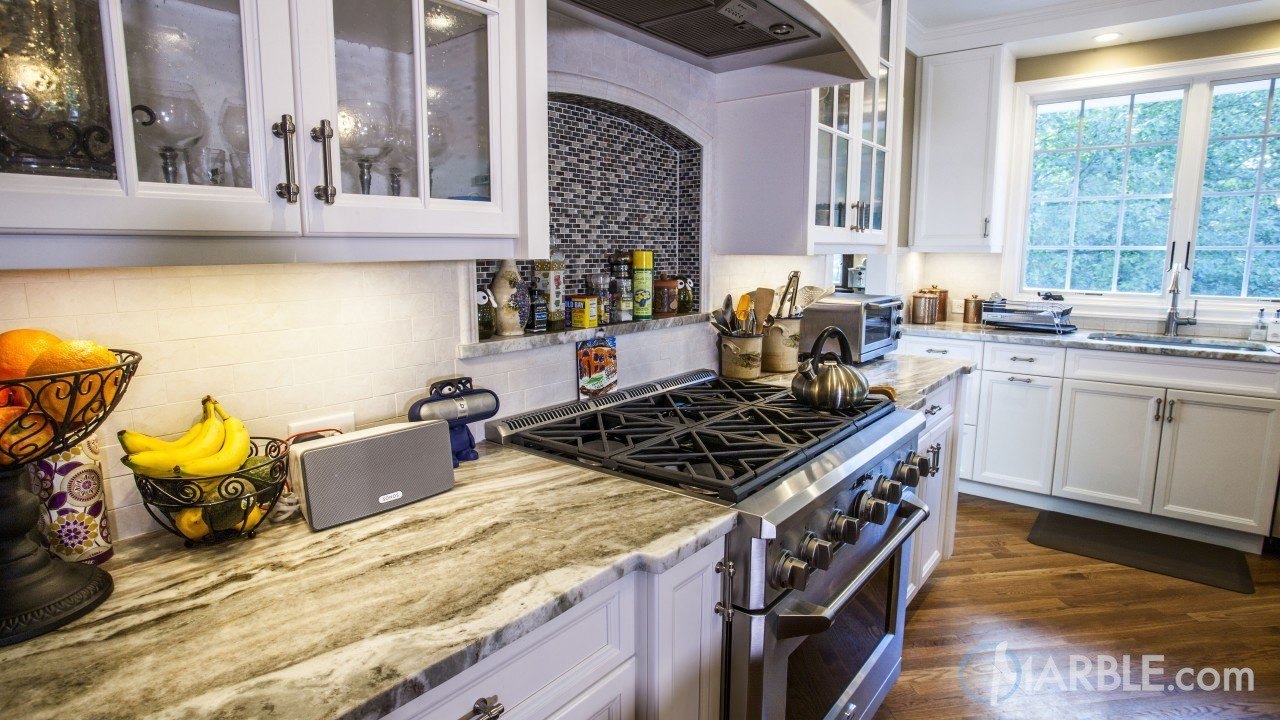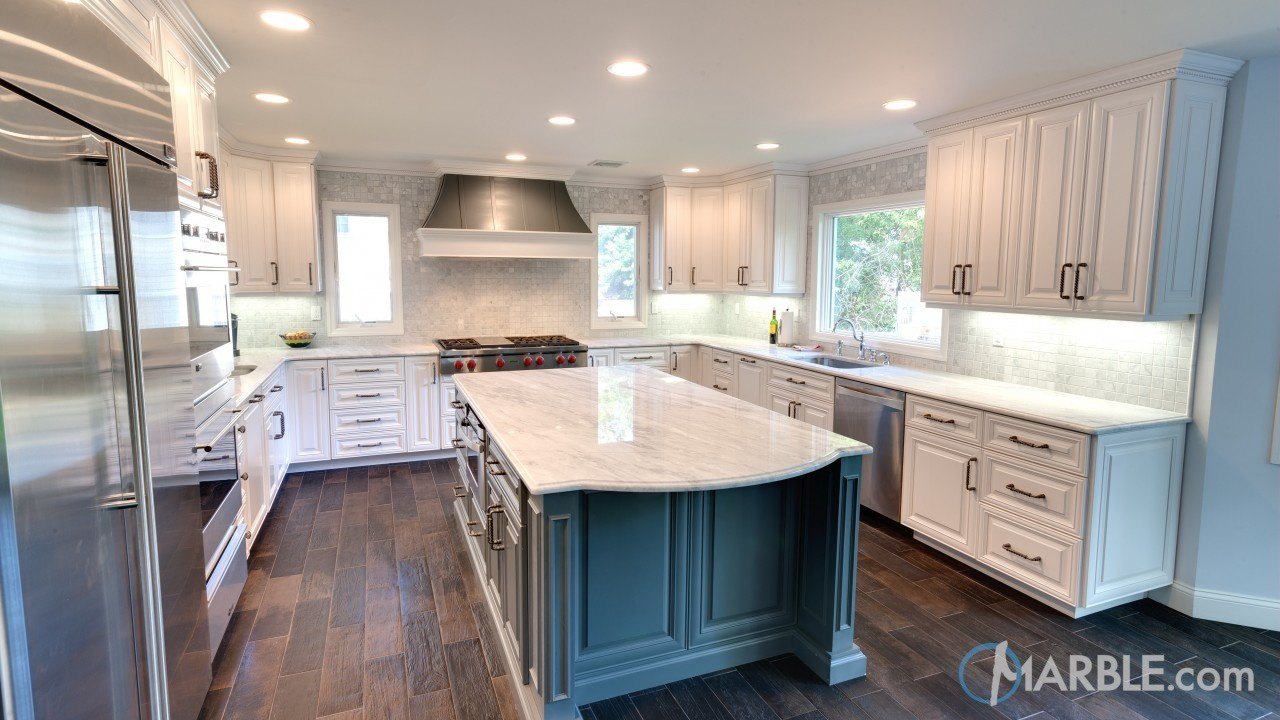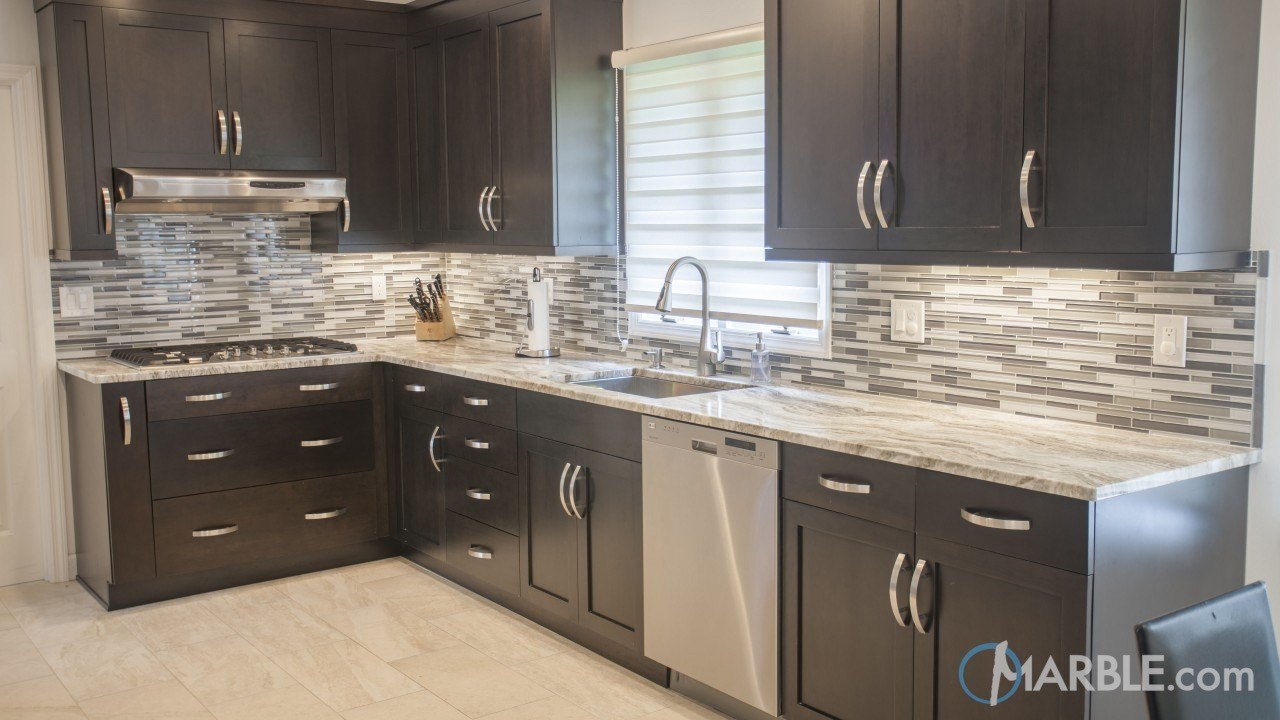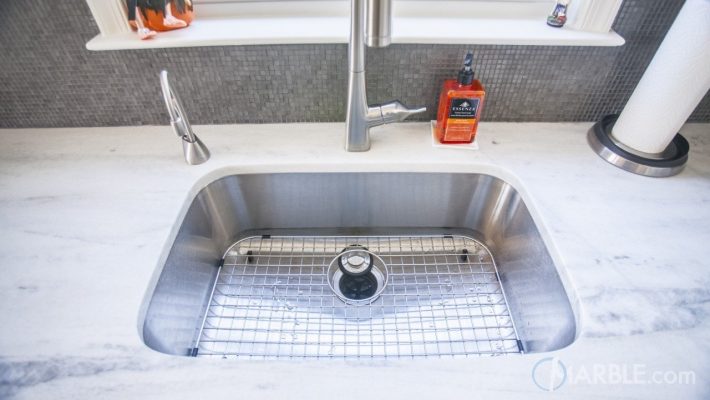There are varying factors that go into determining the perfect match for your kitchen counters.
Some of the most prominent qualities that homeowners often vie for are durability, aesthetic, and easy care. If you’re looking for a countertop choice that fits into these categories, a quartzite counter is a perfect option.
Quartzite is long-lasting, similar in elegant appearance to granite and marble, and maintenance is not overwhelming. It’s the countertop choice that is family-friendly and there’s no everyday use that quartzite can’t take on.
Read on to discover why you should consider quartzite counters for your kitchen.
Durability

Quartzite is sandstone that has been transformed under an intense development of heat and pressure. The result is a very hard and durable natural stone made from sand. “Quartz” is the main component of the stone and because of the intense heat and pressure process, it is classified as a metamorphic rock. There are hard and soft varieties of quartzite.
The harder variety of quartzite is similar to the strength and durability of granite. This means it is very resistant to everyday wear and tear such as staining, scratches, and acidic malformations. Because of its hardness it’s also quite resistant to chipping, cracking, and breaking.
The softer variety of quartzite is similar to marble but not quite as finicky or intensely maintained. In either case it’s important to take great care of hard or soft quartzite to keep it fresh, clean, and in great shape for years to come.
Quartzite is also a sensible choice for your kitchen counters because it is not sensitive to UV light. In many cases kitchens are some of the most naturally brightly lit rooms in the home. Due to the amount of UV light, kitchen countertop surfaces can fade. Quartzite stands above the pack because of its resistance to fade and discolour due to the sun’s rays.
Aesthetic

Quartzite is very similar in appearance to marble with its marbling and swirling. It comes in different colours and varieties but is noted for its beauty and elegance in the marbling effect contained within a slab. Quartzite colours can vary from a classic white and grey look to brown, black, and even varying shades of blue. It’s a classy choice for any kitchen and is bound to give your kitchen that lift of luxury and depth.
Each slab of quartzite is unique in its own way and you can choose from different marbling effects. Many of the marbling effects mimic the looks of wood and water. There are different swirls, lines, and distinct features in each slab that you can choose and piece together for a whimsical yet clean and classy look. Even though there are varying patterns and unique touches in quartzite slabs, it’s still a great choice if you are looking for uniformity in colour and pattern.
Care

Maintaining and caring for a quartzite counter is similar to that of the care if takes for granite and marble. If you choose the harder quartzite option, it’s still important to maintain your surface, but it’s less prone to damage as mentioned above. This is especially true if you have not resealed your counter and the sealant is wearing thin. No surface is immune to the damage that can be done if your countertop is not properly and regularly sealed.
If you decide to install the softer variety of quartzite the care is similar to that of marble, meaning it may require a bit more caution and attention. In either case it’s crucial to clean up spills in a timely manner to avoid discolouration and staining. Also, be careful not to create extreme heat contact with a quartzite surface. It is highly resistant to heat scorching, but it’s better to avoid direct high-heat contact on any countertop surface. An easy way to combat any unnecessary risks is to place a potholder or soft towel underneath any hot pots of pans before placing them on the counter.
Wipe your countertop each night to make sure it’s clean and ready for use the next day. Us a damp towel or cloth and wipe your counters down. Adding a bit of mild dish soap can also help clean up any impurities and prevent lingering spills or residue from damaging the surface. Last but not least, always makes sure a quartzite counter is sealed properly at installation and resealed every one to two years. For more information, please visit website Slab Market.
Cost-effectiveness
Although quartzite is an investment, it is one well worth the making. Expect to pay anywhere around the range of £50 to £200 per square foot. The price range is so wide because it all depends on the slabs that you choose. The more impurities the quartzite contains, the cheaper it will be. The fewer impurities, the higher the price. The price can also change depending on colour. Typically, the darker colours may cost less than the slabs that are white and grey and mimic the look of marble.
It’s also important to factor in what unique features you will add to your quartzite that can affect the price range. This could include the thickness and edging that you choose. The thicker any slab of natural stone, and the more unique features that are included with edging, the higher the price.
Again, it’s well worth the cost if you’re looking for a countertop that will last a long time and make a big impact. Quartzite is a naturally alluring and stunning choice. It’s immune to much of the damage that comes from regular countertop use (all within reasonable care and maintenance), and it will keep your kitchen looking refined for years to come. Quartzite countertops can “take the heat” when it comes to enjoying family time in the kitchen.
